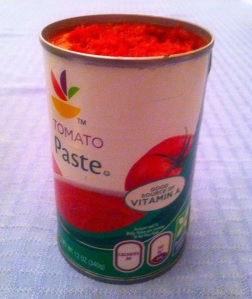The recent move of Congress to include tomato paste as a serving of vegetables has drawn harsh criticism from food activists, school nutrition advocates and average citizens concerned about the current state of public health, particularly in children. Perhaps the biggest controversy surrounding the recent release of the agriculture appropriations bill is that the tomato paste used to make pizzas can now count toward a school’s weekly total of vegetable servings.
The USDA had proposed revising the practice of crediting tomato paste and purees in schools “as a calculated volume based on their whole-food equivalency using the percent natural tomato soluble solids” instead of based on the actual volume served, as is the case with fruit paste and purees. Specifically, schools would credit tomato paste and puree based on actual volume as served, counting one half cup as a half cup.
Under the new proposal, however, an eighth of a cup of tomato paste would get the same food serving status as a half a cup of vegetables.
Initially this sounds rather preposterous against the tide of current efforts to increase the amount of whole grains, fruits and vegetables served to the nation’s school children. However, in a comparison of the tomato paste serving to a half cup of several fruits and vegetables, the paste fared reasonably with regard to nutrition.
According to the L.A. Times and the USDA, this amount of tomato paste contains a half of a cup of tomato solids. It has more vitamins A and C than a half cup of canned green beans, with similar calcium levels and calorie counts, and approximately half the fiber and iron. The paste has more calcium and iron, but less vitamin C and fiber, than a half cup of applesauce, with less than half the calories.
Tolland Food Services Director Abby Kassman-Harned weighed in on the school pizza debate and the nutrition of school lunches in an interview last week. In Tolland, Conn., students can get pizza daily from the cafeterias in the middle and high schools. Yet the pizza served in schools today is a “very different animal” than the frozen school pizzas of yesterday, according to Kassman.


Leave a Reply